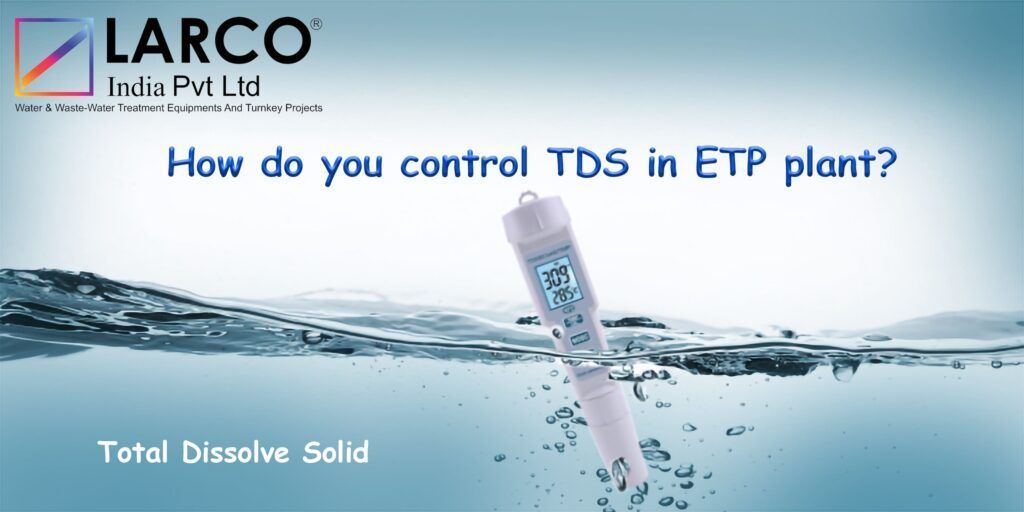How do you control TDS in ETP plant?
Controlling Total Dissolved Solids (TDS) is a critical feature of industrial wastewater treatment that has a direct impact on the efficiency and environmental sustainability of Effluent Treatment Plants (ETPs). A well-known water management expert, Larco India Pvt. Ltd., has compiled an informative guide on successfully How do you control TDS in ETP plant? Join us as we tackle the difficulties of TDS management and showcase creative methods to promote a cleaner, greener industrial landscape.
What is TDS (Total Dissolved Solids):
Total Dissolved Solids (TDS) are the total concentrations of inorganic salts, minerals, metals, and other dissolved compounds in water. High TDS levels in wastewater can cause corrosion, scale formation, and negative environmental effects in industrial settings. As a result, putting appropriate TDS control measures in place is critical.
The Challenge of TDS Control:
TDS management in ETP plants can be a difficult task due to the various nature of industrial effluents and varying regulatory regulations. Larco India Pvt. Ltd., on the other hand, is at the forefront of innovation, providing comprehensive solutions to meet these difficulties head-on.
Key Strategies for How do you control TDS in ETP plant?
Precise Pretreatment:
Thorough pretreatment methods are the first step toward good TDS control. Pretreatment procedures such as coagulation, flocculation, sedimentation, and filtering are important, according to Larco India Pvt. Ltd. These methods help to remove suspended particles, organic materials, and specific ions, lowering the overall TDS load.
Reverse Osmosis (RO) Systems:
Larco India Pvt. Ltd. is a proponent of incorporating RO systems into ETP plants. RO technology uses a semipermeable membrane to remove dissolved ions and pollutants from water, resulting in significant TDS reduction. This sophisticated approach offers effective TDS control as well as improved water recovery.
Evaporation Techniques for How do you control TDS in ETP plant?
Another unique approach to TDS reduction is the use of evaporation processes. Larco India Pvt. Ltd. suggests employing multiple-effect evaporators or mechanical vapour compression systems to concentrate wastewater and facilitate clean water recovery while minimizing TDS concentration.
Ion Exchange Resins:
The use of ion exchange resins can substantially help with TDS management. These resins exchange toxic ions for less damaging ones, effectively decreasing the effluent’s TDS concentration. Larco India Pvt. Ltd. specializes in customizing ion exchange solutions for unique industrial requirements.
Monitoring and Compliance for How do you control TDS in ETP plant?
Continuous monitoring and adherence to regulatory standards are integral to successful TDS control. Larco India Pvt. Ltd. emphasizes the implementation of real-time monitoring systems that provide insights into TDS fluctuations, enabling timely adjustments to treatment processes.
Conclusion:
How do you control TDS in ETP plant? is a complex yet vital endeavor for sustainable industrial growth. Larco India Pvt. Ltd., with its innovative water management solutions, offers a comprehensive approach to TDS control. By incorporating precise pretreatment, advanced technologies such as RO and evaporation, and ion exchange resins, industries can achieve efficient TDS reduction while ensuring compliance with environmental regulations. As a frontrunner in water management, Larco India Pvt. Ltd. empowers industries to embrace responsible wastewater treatment practices and contribute to a cleaner and healthier planet.

